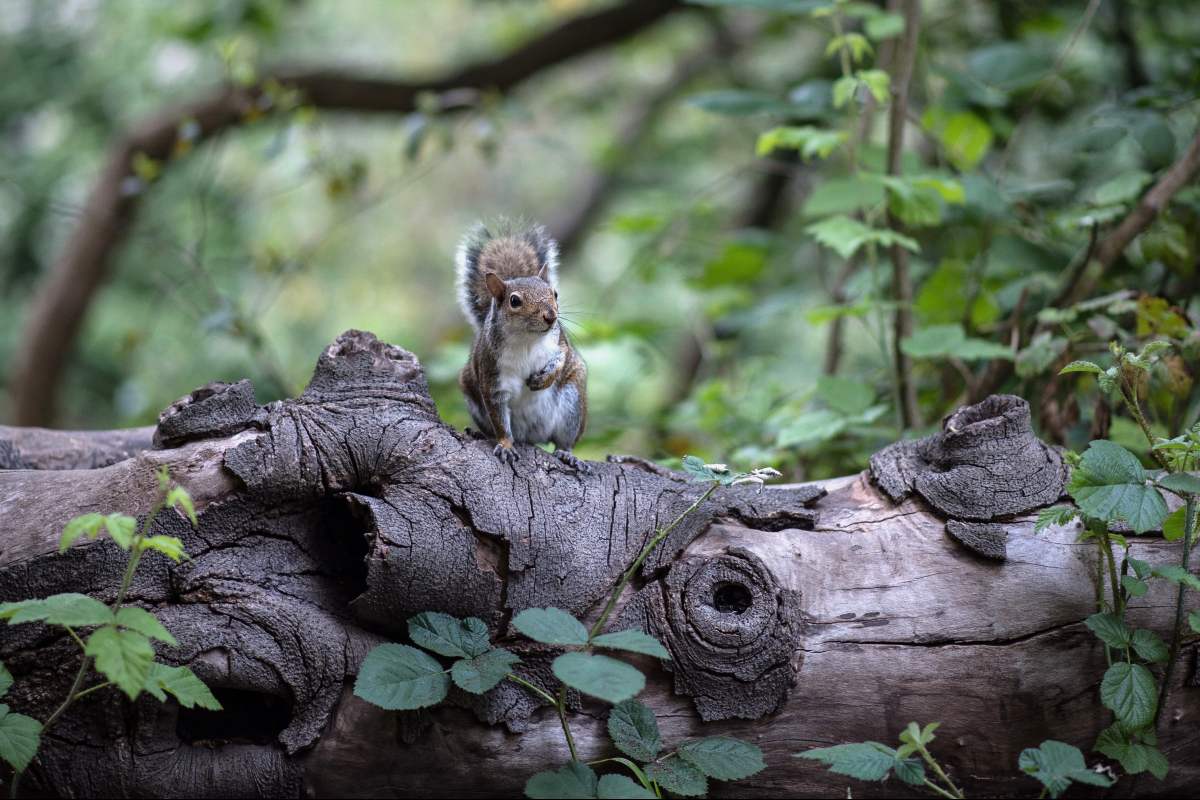
A new study including UAlberta scientists is examining how squirrel survival is impacted by securing their own territory early in life. Photo credit: Unsplash/TJ Holowaychuk
A study involving UAlberta biologists is shedding new light on squirrel survival through the winter months. The team examined over 27 years of data on how red squirrels are affected by environmental factors—and revealed that owning a territory could be one of the most important.
“We examined how the timing of acquiring territory affected winter survival, particularly when external conditions—like colder winters or increased numbers of predators—lead to higher mortality,” said April Martinig, PhD student in the Department of Biological Sciences and co-author of the study. “Testing such things in the wild is incredibly difficult.”
Instead, the researchers worked from a trove of data on red squirrels collected since 1989 through UAlberta’s Kluane Red Squirrel Project, an interdisciplinary large-scale field project monitoring squirrel populations in the southwest Yukon.
“Our most significant finding was that that owning territory has both direct and
indirect benefits for survival,” said Jack Hendrix, lead author of the paper who conducted the research as part of graduate studies at the University of Guelph.
“The probability of surviving the winter was much higher for young red squirrels who found territories earlier, and they also seemed less susceptible to predators,” explained Hendrix. “So territories have a primary function—a cache of spruce cones to feed on throughout the winter—but also influence how much squirrels are affected by the environment around them.”
The secret life of squirrels
The findings tap the data coming from the Kluane Red Squirrel Project, which Martinig’s supervisor Professor Stan Boutin helps lead as one of its principal investigators.
“This study lays the groundwork to dig into new questions that arose, such as ‘what are juveniles without a territory doing?’” said Martinig. “These early findings suggest that moms may play a role in helping juveniles without a place of their own make it through their first winter—something that we are just beginning to understand and is a focus of my current work.”
Those questions, and the data from the Kluane Red Squirrel Project, are helping pull back the curtain on this animal population, yielding new insight into animal lives.
“This research is valuable in the field of wildlife ecology for understanding survival at an individual level,” said Hendrix. “By having information for individual squirrels as well as annual measures like temperature variation and predator and food abundance, we can understand how factors that affect population size—predation, climate, resources—can affect individuals differently.”
The paper, “Territory acquisition mediates the influence of predators and climate on juvenile red squirrel survival,” was published in the Journal of Animal Ecology (doi: 10.1111/1365-2656.13209)
Check out the Faculty of Science Sustaining Earth’s Systems hub for more stories on the latest research and initiatives from campus in sustainability and conservation.